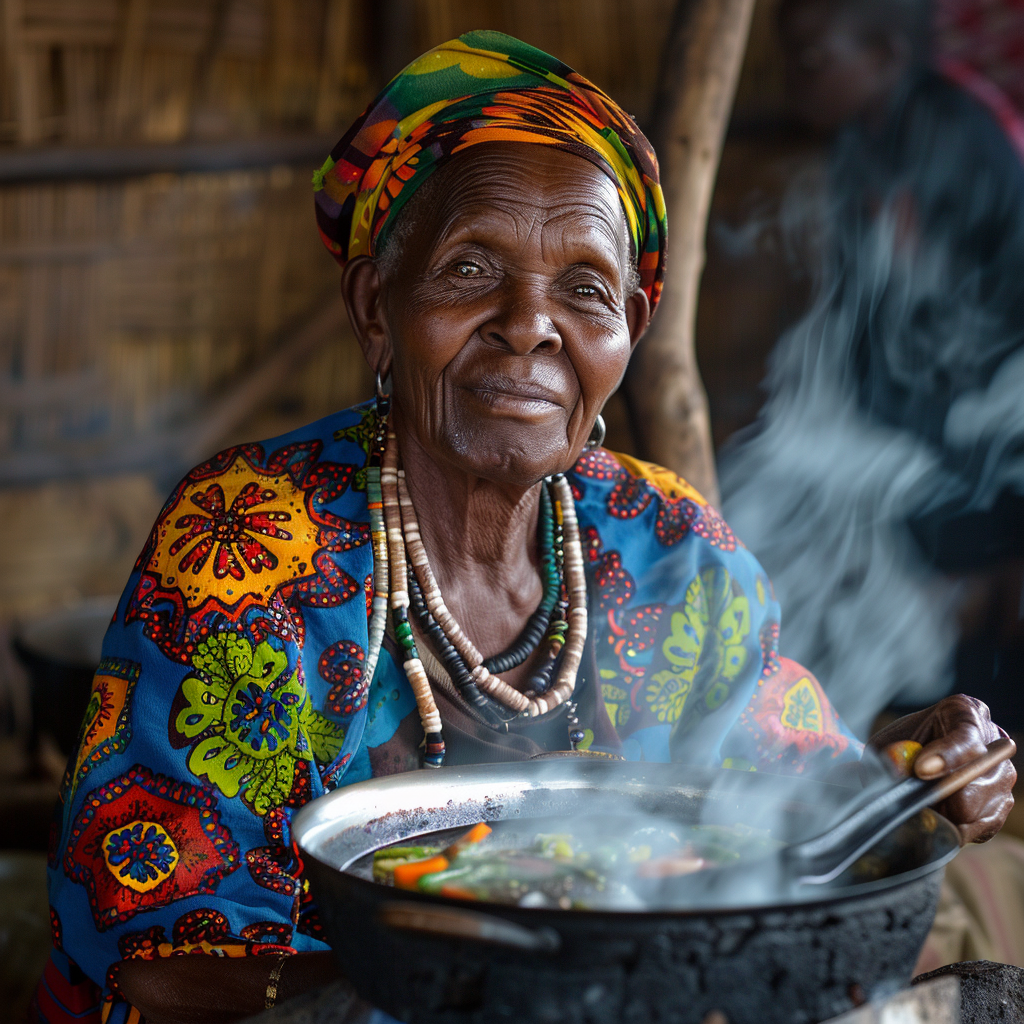
Sisters, gather round! Food is more than sustenance; it’s a thread that weaves through history, culture, and identity. Today, we embark on a delicious journey to experience the unique tastes and aromas that define African cuisine, a celebration of our heritage and a source of immense cultural pride. Through “Cooking with Tradition,” “Traditional Spices,” “Staple Ingredients,” and a peek into “Regional Dishes,” we’ll rediscover the magic in our grandmothers’ kitchens and empower ourselves to become culinary storytellers.
Cooking with Tradition: A Legacy Passed Down
African cuisine is a vibrant tapestry woven from generations of knowledge and tradition. Our mothers and grandmothers were not just cooking meals; they were passing down a legacy. Remember those slow mornings filled with the rhythmic pounding of mortars and pestles? Every step, from grinding spices to simmering stews, held a deeper meaning. This “ancestral wisdom” wasn’t just about cooking; it was about community, resourcefulness, and resilience.
Let’s reclaim this legacy in our own kitchens. Dust off those family recipes, ask your elders about their cooking techniques, and don’t be afraid to experiment. There’s immense power in recreating these dishes; it’s a way to connect with our roots and honor the strong women who came before us.
Traditional Spices: A Symphony of Flavor
African cuisine is an explosion of flavor, and the secret lies in our love affair with spices. From the warmth of fragrant berbere in Ethiopia to the earthy depth of sumac in West Africa, each spice adds a unique note to the symphony on your plate.
Here are some must-have spices in your pantry:
- Atarodo (Scotch Bonnet Pepper): This fiery pepper adds a kick to stews and sauces.
- Egusi (Melon Seeds): Ground into a thick paste, egusi adds a nutty richness to soups and stews.
- Curry Powder: A blend of spices like turmeric, coriander, and cumin, this adds warmth and complexity to dishes.
- Netel Leaf (Uziza): This West African spice has a unique, peppery flavor and is often used in soups and stews.
- Cloves: These aromatic buds add a warm, pungent flavor to rice dishes and stews.
The use of traditional spices is a testament to the ingenuity of African cooks who have mastered the art of enhancing flavors while keeping the nutritional integrity of their dishes intact. These spices do more than enhance flavor they serve as a bridge connecting Black women to their ancestral lands and traditions.

Staple Ingredients: A Celebration of Resourcefulness
African cuisine is a testament to the resourcefulness of our ancestors. They used readily available ingredients to create nourishing and flavorful meals. Some staples you’ll find across the continent include:
- Grains: From fluffy couscous in North Africa to protein-rich fonio in West Africa, grains form the base of many African dishes.
- Legumes: Lentils, black-eyed peas, and beans are a valuable source of protein and fiber, making them a mainstay in African cooking.
- Root Vegetables: Cassava, yams, and plantains are incredibly versatile, used in everything from stews to fufu (a dough made from starchy vegetables).
- Vegetables: Vibrant and seasonal vegetables like okra, spinach, and tomatoes add essential vitamins and color to African dishes.
Regional Dishes: A Culinary Tour of Africa
The beauty of African cuisine lies in its diversity. Embark on a culinary tour with these regional specialties:
- West Africa: Jollof Rice (a fragrant rice dish with variations across the region), Egusi Soup (a rich soup made with melon seeds), Plantain Fufu (a delicious accompaniment made from boiled and mashed plantains).
- East Africa: Injera (a spongy flatbread used to scoop stews), Doro Wat (a spicy chicken stew), Kitfo (minced raw beef seasoned with Ethiopian butter) and Kenyan Sukuma wiki (collard greens), cooked with onions and spices.
- North Africa: Tagine (a flavorful stew cooked in a conical clay pot), Couscous (steamed semolina grains), Pastilla (a savory pastry filled with chicken, almonds, and spices).
- Southern Africa: Pap (a maize porridge), Umqombothi (a traditional beer made from maize), Bobotie (a fragrant meat pie with a curried egg topping). Potjiekos, It usually consists of meat and vegetables and is prepared outdoors and cooked slowly over an open fire.

Empowering Ourselves Through Food
Cooking with tradition is not merely about following recipes; it’s about preserving the methods and ingredients that our foremothers used to nourish their families and communities. This includes the communal cooking practices where recipes were taught hands-on from mother to daughter, fostering strong bonds and ensuring the survival of cultural identity through food.
Sisters, as we delve into the world of African cuisine, we’re not just cooking; we’re reclaiming our heritage. We’re honoring the grandmothers who nurtured us and the ancestors who cultivated the land. Every dish we create is a testament to our resilience, creativity, and strength.
So, fire up your stoves, gather your loved ones, and embark on this culinary adventure. Let’s celebrate the vibrant flavors of African cuisine and share the stories woven into every bite.
Do you have a favorite African dish or family recipe? Share it in the comments below! Let’s build a community.


